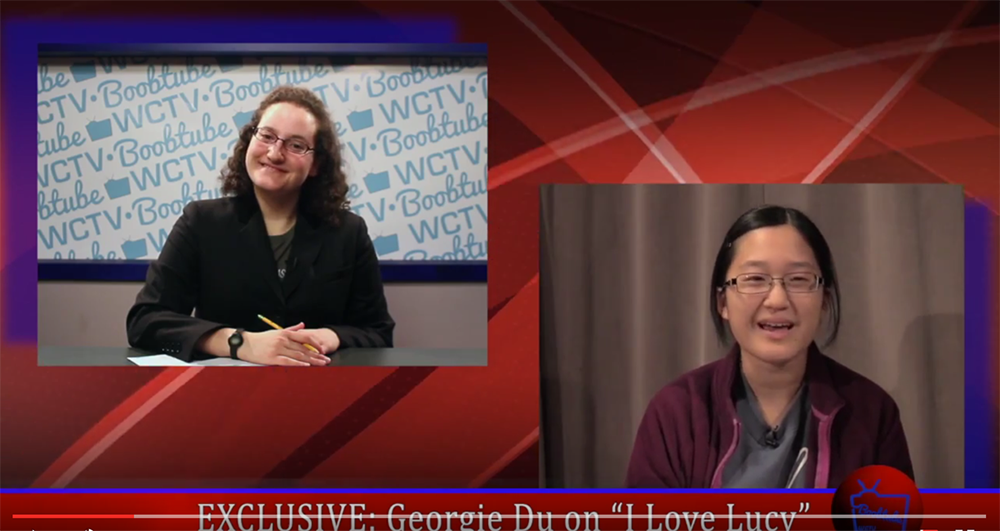Television
Television
CAMS 227 • Wini Wood

A screen capture from an exceptional student vlog entry.
For my blended learning project in a course on the history and theory of television, I refined a video log assignment I had developed for the first iteration of this course. The idea was for students to create visual work that mimicked the visual “reality” of television: work that was produced quickly, in a timely way, to be viewed on the small screen, on a regular basis. Students were asked to produce bi-weekly “video logs,” or “vlogs,” each of which applied the theory currently being read to a television series that the student was watching. I provided prompts for each vlog, and students were then free to make them as plain, or as fancy, as they wished. To even the playing field between skilled CAMS majors and newbies, I graded primarily on content: how well were students displaying their understanding of the weekly readings?
The first time I taught this course, each student produced her own vlog, and I noticed that the vlogs changed very little from beginning to end of the semester; for the most part, students simply spoke their thoughts to the screen. The content was good enough, but the assignment began to feel redundant, even a bit boring.
With the help of the blended learning grant, I worked with Jordan Tynes and Becca Darling to amp up the assignment. We decided to have students work in pairs, and Jordan suggested that we develop an interview format: in his words, the interview is a staple of television. We looked at a wide range of interviews in class (for example, the famous Frost-Nixon interview; Daily Show interviews; reality show interviews) and discussed possible formats. Students were to alternate weeks functioning as the interviewer-producer and the interviewee. The interviewee was treated as the “expert” on that week’s content. I gave students time in class to work in their pairs to develop productive interview questions related to the readings, and we critiqued those questions. Once the first vlogs were completed, we took class time to critique the vlogs. All vlogs were posted to our class GooglePlus page for everyone to view.
Initially, students tended to speak at very great length; they had a hard time trimming their talk to the requisite 2.5 minutes for each vlog. With time, they learned to get to the core of the message—to ask and answer questions clearly and precisely. They tended to cut and paste long sequences from their example shows, and had to learn to edit down to very short, illustrative segments.
At their very best, the vlogs showed amazing control of the class material both through the form of the vlog and through the content expressed; not all vlogs were dazzling, but all teams improved over time.
But what excited me most about this project was not what I saw in the vlogs; it was what I saw swirling around and about the vlogs. Teams talked at length outside of class about each week’s readings, engaging in serious conversation as they argued about what was most important in each reading, as they attempted to explain terms and concepts to each other, and as they strove to see how their selected television show might serve as an example of those terms and concepts. They developed a much greater capacity to articulate themes of the readings, readily and naturally. I had many visitors to the class throughout the semester (parents, alumnae, colleagues) and all commented with wonder on how fluidly and spontaneously the students were discussing readings that were theoretically difficult. Their absorption of the course material was ultimately evident not only in their classroom discourse, but also in their papers and final exams—all of which turned out to be a pleasure to read.
The vlogs themselves stand as tangible artifacts of this blended learning project, and are available on the CAMS 222 GooglePlus page, where students posted their vlogs. But I would argue that it is the less tangible, less obvious part of the process that produced the greatest results, at least in the case of CAMS 222.
![]() Watch a brief video overview of this project:
Watch a brief video overview of this project:


